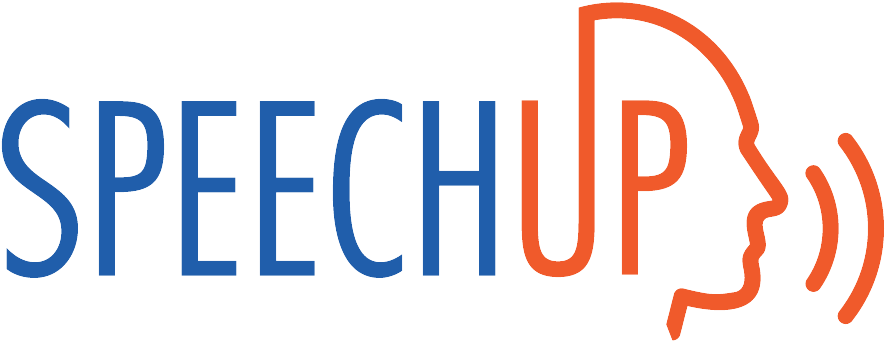ONLINE SPEECH THERAPY
Speech Sound Disorders
Convenient & Effective Speech Therapy


SPEECH SOUND DISORDERS
What is a speech sound disorder?
A speech sound disorder refers to any difficulty with producing or perceiving speech sounds. This includes issues like articulation disorder, phonological disorder, dysarthria, and apraxia. These disorders can stem from neurological or motor conditions, but sometimes the cause is unknown. When diagnosing and treating a speech sound disorder, professionals usually consider two main categories:
Functional Speech Sound Disorder: This type has no known cause and is not linked to other conditions. It typically includes articulation and phonological disorders.
Organic Speech Sound Disorder: This type has a known cause, often related to another diagnosis such as a motor or neurological condition. For instance, dysarthria can occur after a stroke, or apraxia can result from a traumatic brain injury.

SPEECH SOUND DISORDER SIGNS
Signs and symptoms of a speech sound disorder can vary based on its type and severity. Here’s what to look out for:
In Children
- Difficulty making speech sounds
- Inconsistent or incorrect pronunciation
- Struggling to be understood by others
- Frustration or reluctance to speak
Children with speech sound disorders might also:
- Have delayed language development
- Use a smaller vocabulary
- Struggle with grammar and sentence structure
In Adults
The signs can be subtler but may include:
- Trouble finding words
- Slower speaking rate
- Monotone voice
- Issues with intonation and stress patterns
Adults may also find social interactions challenging and might avoid speaking situations.
Seeking Help
If you suspect a speech sound disorder, it’s important to get a comprehensive evaluation from a speech-language pathologist. Early intervention can significantly improve speech and language skills, leading to better communication outcomes.
SPEECH SOUND DISORDER CAUSES
What causes a speech sound disorder?
Many speech sound disorders don’t have a clear cause. However, several risk factors can contribute to these issues:
Family History: Children with a family history of speech sound disorders are more likely to develop them.
Hearing Loss: Hearing loss, especially if it occurs before or during early childhood, can lead to speech sound errors.
Developmental Disabilities: Conditions like autism spectrum disorder or Down syndrome increase the likelihood of speech sound disorders.
Traumatic Events: Strokes, traumatic brain injuries (TBIs), or other brain-related illnesses can cause speech disorders like dysarthria or apraxia.
Structural Differences: Physical differences, such as a cleft lip or cleft palate, can affect speech.
It’s important to remember that not all children with these risk factors will develop a speech sound disorder, and some children without any known risk factors may still experience them.
SPEECH SOUND DISORDER DIAGNOSIS
How are speech sound disorders diagnosed?
Speech sound disorders are usually diagnosed through a thorough evaluation by a speech-language pathologist (SLP). Typically, a medical professional, teacher, or parent/guardian refers the individual to the SLP when they notice issues with speech sounds that persist.
Once referred, the SLP will gather background information on the person. For a child, this might include developmental history, while for an adult, it could involve medical history, especially if there’s been a traumatic event like a stroke or traumatic brain injury (TBI).
The SLP might start with a screening to identify any missing or distorted speech sounds. If the individual doesn’t pass the screening, the SLP will conduct a more detailed, standardized assessment. If this assessment indicates a problem, the individual will be diagnosed with a speech sound disorder and considered for treatment. This disorder might be secondary to another diagnosis or a functional issue without an underlying diagnosis.
SPEECH SOUND DISORDER TREATMENT
How are speech sound disorders treated?
Treating speech sound disorders can involve a range of approaches, depending on the type and severity of the issue. Here are some common methods:
Articulation Therapy: This focuses on helping people pronounce sounds correctly through practice and feedback.
Phonological Therapy: This method looks at patterns of errors in speech and aims to improve how individuals use and understand language.
Oral-Motor Therapy: This targets the strength and coordination of speech-related muscles, like the lips, tongue, and jaw.
Augmentative and Alternative Communication (AAC): For those with severe speech disorders, AAC devices or strategies can help with communication.
Involvement of Parents or Caregivers: Often, parents or caregivers are trained to support and practice speech and language skills at home.
The length and type of treatment will depend on individual needs and progress, but generally, starting early and practicing regularly leads to the best results.

